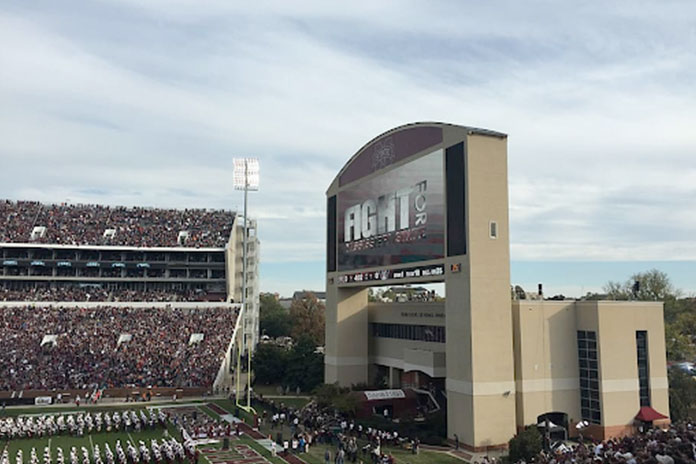Stadium scoreboards have come a long way from their humble beginnings. Once simple chalkboards or hand-operated devices, today’s scoreboards are technological marvels that enhance the fan experience in unprecedented ways. Besides singing chants and cheering for the players the other way to interact with the game is to place bets with your phone. To be sure that you’re getting full experience use only trusted apps, as at the link you can find a review and go through 12bet download in india. This article delves into the fascinating evolution of stadium scoreboards, exploring their history, technological advancements, and the role they play in modern sports arenas.
The Humble Beginnings: Chalk and Hand-Operated Boards
Cricket’s Contribution
The story of the scoreboard begins with cricket. The Melbourne Cricket Ground, built in 1854, had a hand-operated scoreboard by 1858 that displayed the batter’s score and team totals. This was a significant leap from the days of Ancient Greece and Rome, where there’s little evidence of scoreboards at sporting events.
Baseball’s Chalkboards
In North America, baseball parks started using chalkboards to track scores in the 1870s. Newspaper offices would also tally scores on boards outside their premises, attracting thousands of fans during events like the World Series.
The Electronic Revolution
The First Electronic Scoreboards
The Boston Beaneaters (now the Atlanta Braves) introduced a scoreboard with a bit of electronics in 1888. This “baseball register” used electric wires to display decisions of the umpire.
The Astrodome’s Animated Board
The 1965 Astrodome featured the first animated scoreboard, setting the stage for modern scoreboards. It had 50,000 lights running a 45-second animation after home runs and wins.
Also Read: Gaming TV: What Makes A Good Gaming TV?
The Digital Age: LED and Beyond
The Game-Changer: AT&T Stadium
In 2009, the Dallas Cowboys opened their HKS-designed AT&T Stadium, featuring a massive Mitsubishi screen. This center-hung positioning 90 feet above the field provided fans with an unprecedented digital experience.
U.S. Bank Stadium’s Fan-Centric Design
The Minnesota Vikings’ U.S. Bank Stadium opened in 2016 with two high-quality LED boards and a robust Wi-Fi system. The boards were placed in the east and west end zones but as low as possible within natural sight lines.
SoFi Stadium: The Crown Jewel
SoFi Stadium, home to the NFL’s Rams and Chargers, features a dual-sided, center-hung, circular video board that is the largest ever made. It weighs 2.2 million pounds and has 70,000 square feet of 4K LED lighting.
The Future of Stadium Scoreboards
Beyond the Game
The future holds exciting possibilities, from scoreboards that could become windows allowing fans to virtually attend events to boards that offer a “blue ocean of the future” in content expansion.
The Role of Scoreboards in Fan Engagement
As Mark Quiroz, vice president of marketing for the display division at Samsung, points out, scoreboards are no longer just about providing complimentary information; they are about creating an experience and increasing fan engagement.
Final Thoughts: The Remarkable Transformation of Scoreboards in Stadiums
The scoreboards in stadiums have experienced a remarkable transformation, shifting from basic chalkboards and manually operated systems to today’s high-tech digital wonders. These digital displays have transcended their original purpose of merely keeping track of scores; they’ve evolved into versatile platforms that offer a plethora of information and entertainment features. Whether it’s showcasing player stats, instant replays, or even eye-catching animations and ads, contemporary scoreboards act as a focal point for enriching the spectator experience.
The emergence of LED technology has been a cornerstone in this evolution, offering screens that are not just more luminous and sharp, but also better in energy conservation. The introduction of blue LEDs during the early 1990s marked a significant milestone, facilitating the production of white light by amalgamating red, green, and blue LEDs. This leap in technology laid the foundation for the development of grander and more intricate scoreboards, such as the immense display at SoFi Stadium, which serves as a vivid example of how far we have come.
Looking ahead, the significance of scoreboards in sports venues is poised to grow exponentially. With ongoing technological innovations, we can expect even more interactive and captivating features. Ideas like virtual fan participation and real-time analytics are already in the pipeline, promising to make scoreboards an increasingly essential element in the world of sports.
However, the evolution isn’t solely about technological advancements; it’s also about deepening fan engagement. As the sports industry becomes increasingly commercialized and the competition for viewer attention escalates, scoreboards emerge as a potent asset for teams and advertisers to connect with fans in a substantive manner. Be it through live updates, interactive contests, or integration with social media, the future scoreboard will be a multifaceted platform catering to diverse interests.
To wrap it up, the next time you’re at a sporting event, don’t overlook the scoreboard. It’s not just a panel for displaying scores; it’s an emblem of tech advancements, a conduit for fan engagement, and a sneak peek into the future landscape of sports spectatorship.
Also Read: Play777games – Play Games Online For Free

